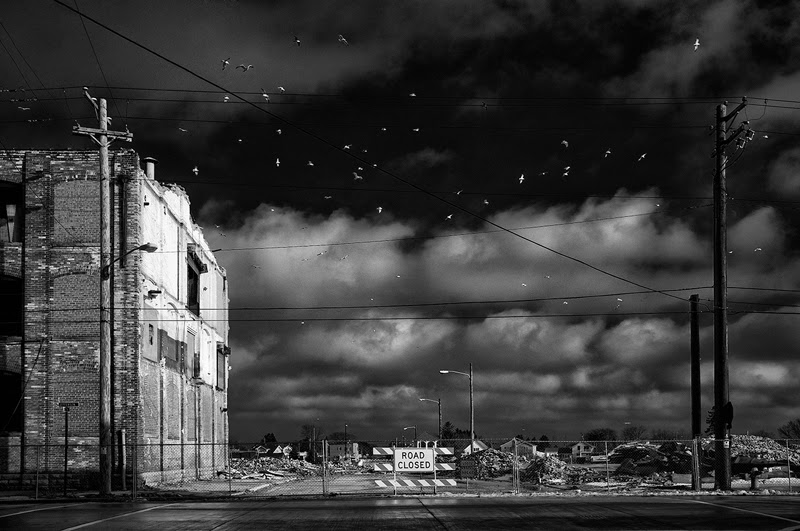Several weeks ago I visited the Milwaukee Art Museum to see Postcards From Milwaukee. The exhibit included work made in Milwaukee over the course of about 9 months by a group of eleven Magnum Photographers. Among them was Mark Power, whose work I responded to strongly. I have always been more of a portrait photographer, and have only recently began shooting landscape and street photos. As a result of my training and practice in portraiture, the landscapes I make share a similar aesthetic to my portraits. These choices include shallow depth of field and either the exclusion of anything I feel is not necessary to convey my chosen subject, or stepping so far away that the subject is fully isolated. I think that it was the difference in how Mark Power photographed the urban landscape that really caught my attention. While his photographs can be seen to have one main subject, he doesn’t force the viewer’s eye straight to it. His photos have a nearly infinite depth of field and very objective framing, allowing the viewer to explore the entire image and take away from it what they choose. This approach to photographing resulted in a truer and more democratic story of Milwaukee as place.
 |
| Milwaukee, WI - Mark Power |
 |
| Milwaukee, WI - Mark Power |
 |
| Milwaukee, WI - Mark Power |
It was with this new understanding that I returned to my hometown of Two Rivers, WI to capture its sense of place. While I wanted to use the formal elements of Power’s landscapes in my images, I still wanted to have my hand somewhere in the story. I chose to make images of locations where I had strong personal memories, but would resist my natural tendency to lock in on the details. Instead I photographed them in the style of Mark Power. All of the images were made in the locations of my memory, but the actual object or place is obscured behind or amongst the many other subjects now visible in my images,
While I was making these images, I struggled continuously with this new form of photography. I have always been very aware of what makes its way into the frame. It was very difficult to resist moving in too close in an attempt to keep things such as a light pole out of the image. Eventually I learned to embrace everything in a location and believe I was successful creating compelling and objective compositions of the area. Initially I intended to photograph in color to follow directly in Mark Power’s footsteps. I was however completely distracted by the color in my images, and I eventually converted them all to black and white. I haven’t decided yet whether this reduces or reinforces the trueness of the images. But in the end, I feel that the following set of images accurately captures the personality of my hometown.















